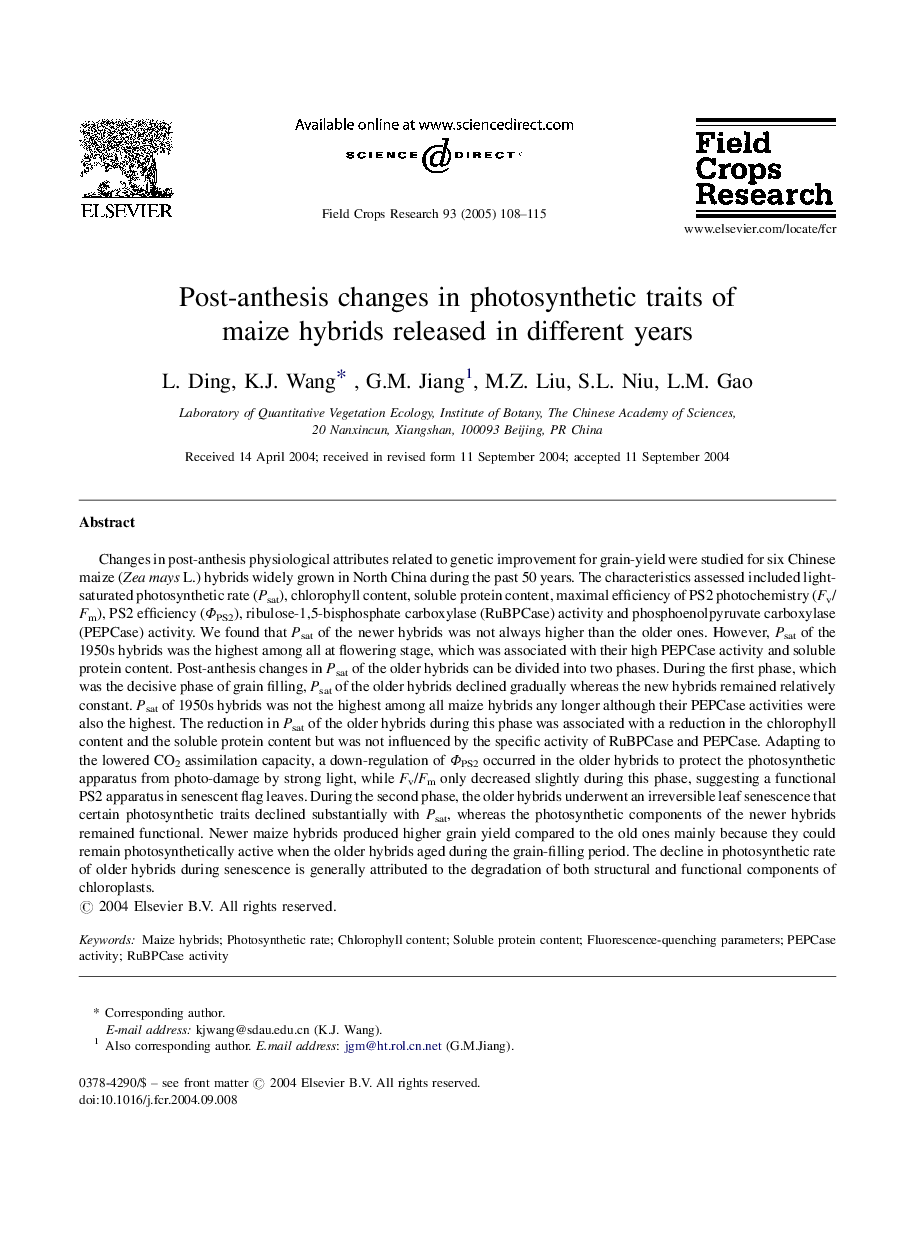| Article ID | Journal | Published Year | Pages | File Type |
|---|---|---|---|---|
| 9473530 | Field Crops Research | 2005 | 8 Pages |
Abstract
Changes in post-anthesis physiological attributes related to genetic improvement for grain-yield were studied for six Chinese maize (Zea mays L.) hybrids widely grown in North China during the past 50 years. The characteristics assessed included light-saturated photosynthetic rate (Psat), chlorophyll content, soluble protein content, maximal efficiency of PS2 photochemistry (Fv/Fm), PS2 efficiency (ΦPS2), ribulose-1,5-bisphosphate carboxylase (RuBPCase) activity and phosphoenolpyruvate carboxylase (PEPCase) activity. We found that Psat of the newer hybrids was not always higher than the older ones. However, Psat of the 1950s hybrids was the highest among all at flowering stage, which was associated with their high PEPCase activity and soluble protein content. Post-anthesis changes in Psat of the older hybrids can be divided into two phases. During the first phase, which was the decisive phase of grain filling, Psat of the older hybrids declined gradually whereas the new hybrids remained relatively constant. Psat of 1950s hybrids was not the highest among all maize hybrids any longer although their PEPCase activities were also the highest. The reduction in Psat of the older hybrids during this phase was associated with a reduction in the chlorophyll content and the soluble protein content but was not influenced by the specific activity of RuBPCase and PEPCase. Adapting to the lowered CO2 assimilation capacity, a down-regulation of ΦPS2 occurred in the older hybrids to protect the photosynthetic apparatus from photo-damage by strong light, while Fv/Fm only decreased slightly during this phase, suggesting a functional PS2 apparatus in senescent flag leaves. During the second phase, the older hybrids underwent an irreversible leaf senescence that certain photosynthetic traits declined substantially with Psat, whereas the photosynthetic components of the newer hybrids remained functional. Newer maize hybrids produced higher grain yield compared to the old ones mainly because they could remain photosynthetically active when the older hybrids aged during the grain-filling period. The decline in photosynthetic rate of older hybrids during senescence is generally attributed to the degradation of both structural and functional components of chloroplasts.
Related Topics
Life Sciences
Agricultural and Biological Sciences
Agronomy and Crop Science
Authors
L. Ding, K.J. Wang, G.M. Jiang, M.Z. Liu, S.L. Niu, L.M. Gao,
